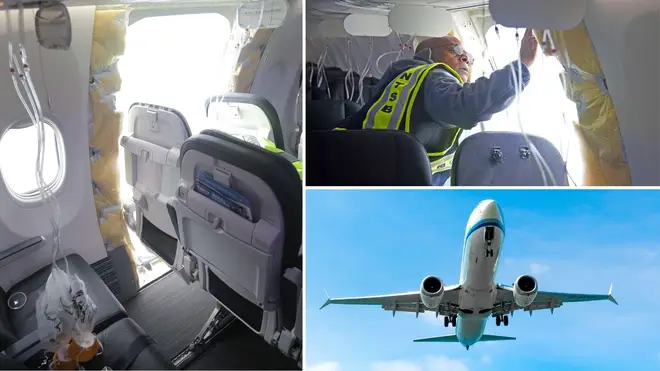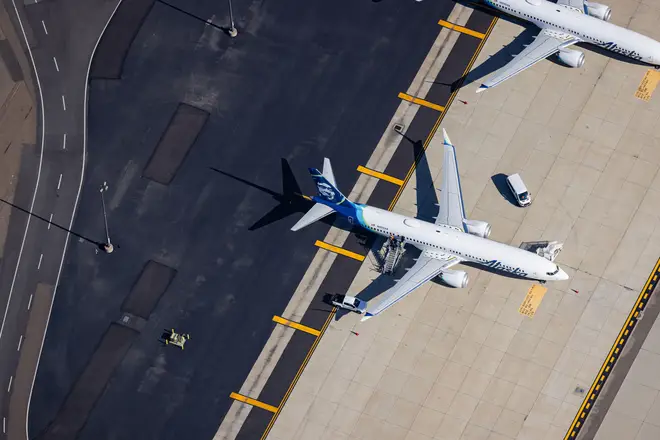
Daniel Barnett 9pm - 10pm
6 February 2024, 20:51 | Updated: 6 February 2024, 20:54

A door that blew off a new Boeing 737 Max 9 shortly after take-off appeared to be missing four key bolts, a new report has said.
The US National Transportation Safety Board released findings from its investigation into the Alaska Airlines flight which saw a door plug knocked out after taking off in Portland, Oregon, on January 5.
The apparent manufacturing error caused uncontrolled decompression of the aircraft, which was forced to make an emergency landing. All passengers survived the flight but three sustained minor injuries.
Some 171 of 218 Boeing 737 Max 9 jets were grounded by the Federal Aviation Administration following the incident. But plains have now been allowed to return to service if they pass inspections.
The US safety regulator has now released photographic evidence alongside the preliminary findings of its investigation.

Read More: Boeing flags potential delays after supplier finds new problem with some 737s
Read More: Low-cost airlines report busier January but fill fewer seats on planes
Spirit AeroSystems manufactured the door and was installed before being delivered to Boeing to be installed on the plane.
The report said the door plug was removed in the factory due to damage sustained during the production process.
The door plug was reinstalled, the report said, but at least three of the four bolts were not put back in place.
Boeing conceded to regulators, shareholders, passengers, and airlines that it has "more work to do" to repair its reputation. It confirmed some 94% of the affected jets have resumed service.
The incident in January occurred when the unused emergency exit, also known as a door plug, flew off. It left a gaping hole in the side of the mid-air plane.
The plane had just taken off from Portland International Airport when it suffered a huge loss of cabin pressure as compressed air escaped from the plane and was replaced with thinner air from a high altitude.